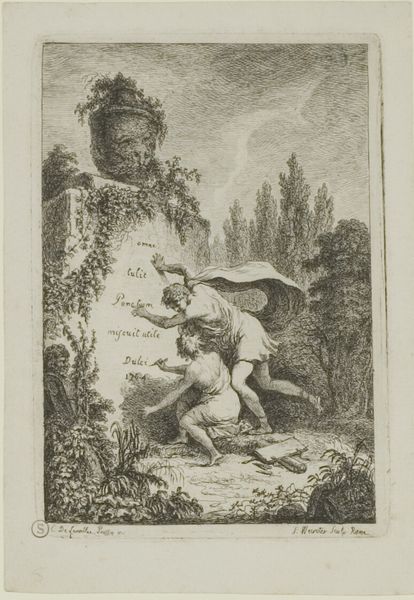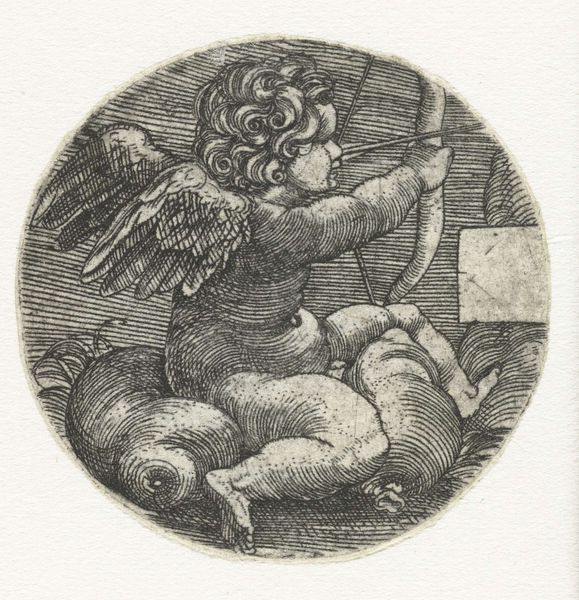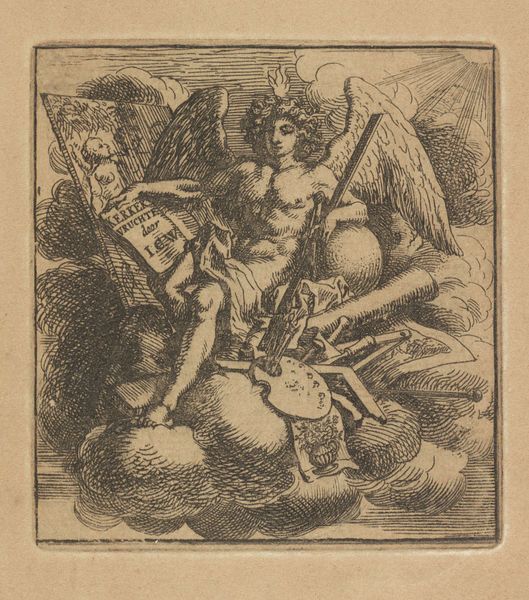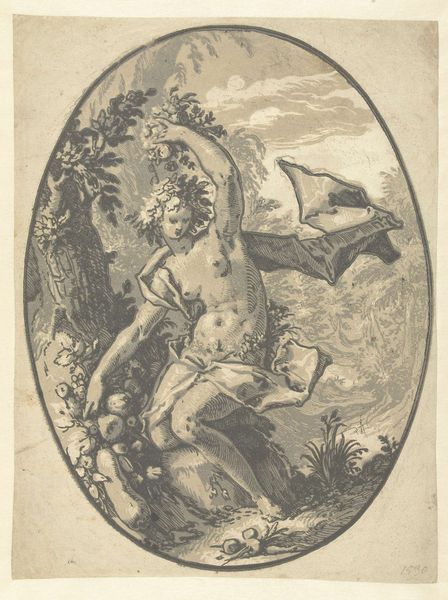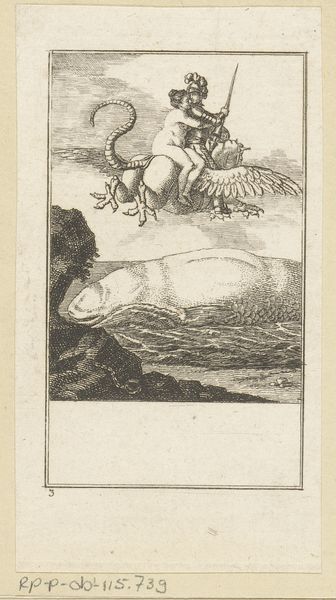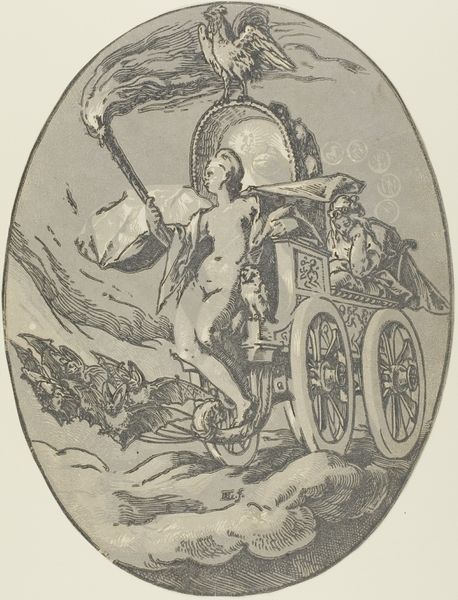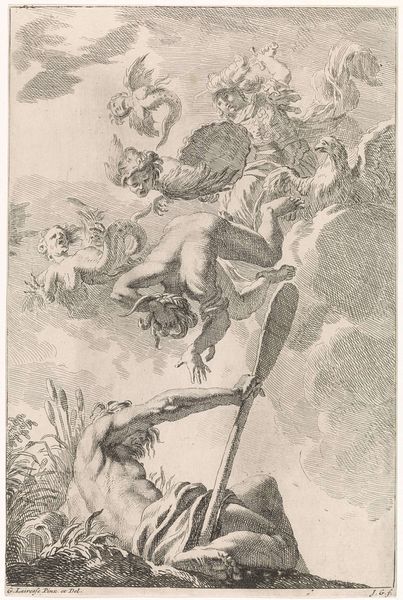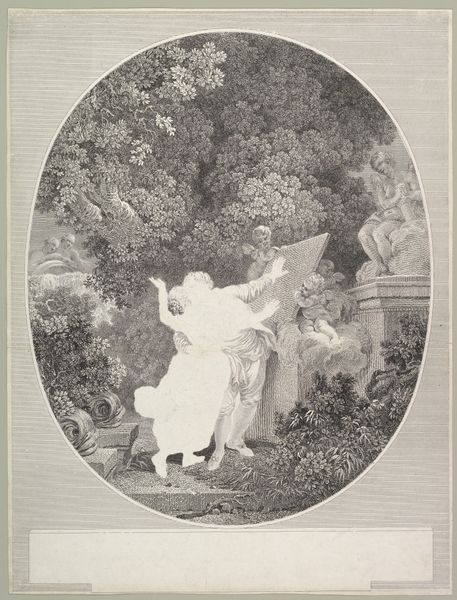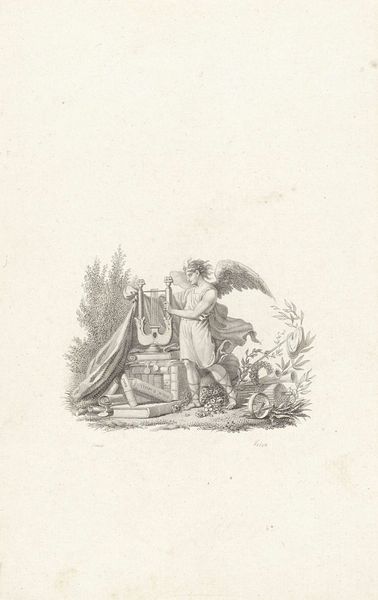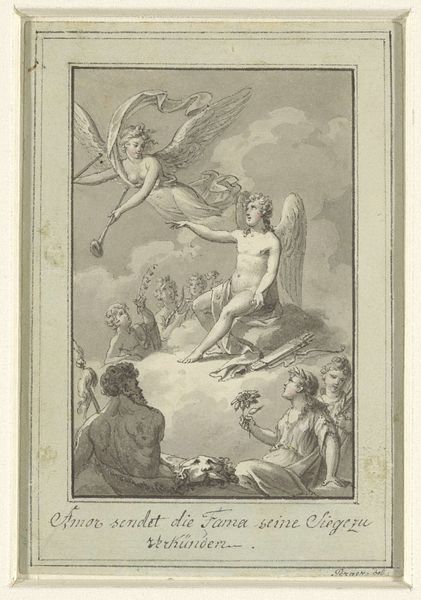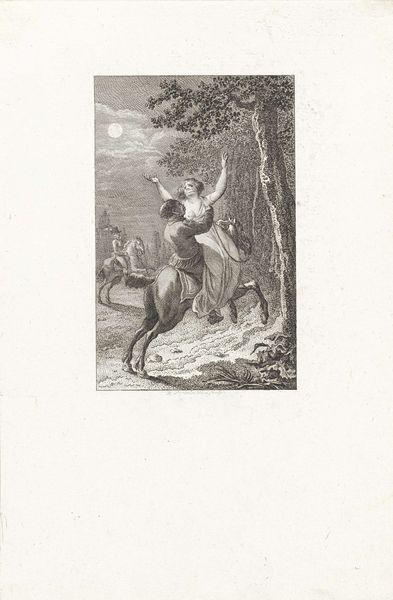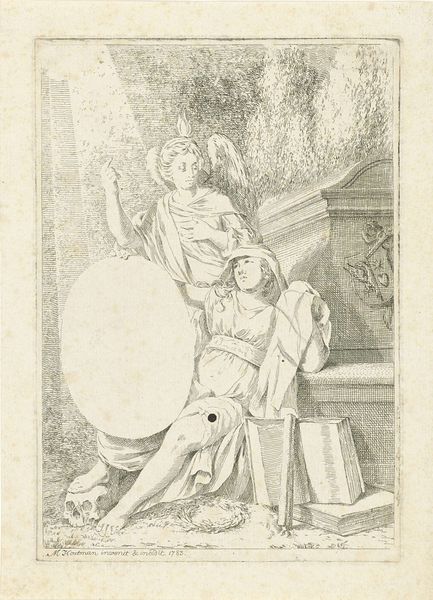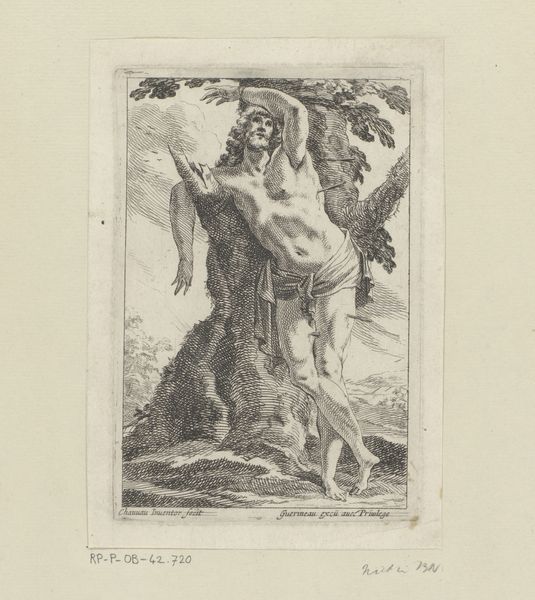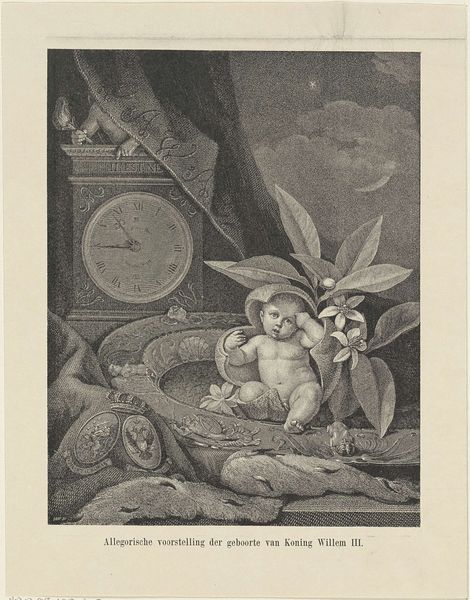
drawing, dry-media, pencil
#
pencil drawn
#
drawing
#
toned paper
#
allegory
#
landscape
#
figuration
#
dry-media
#
pencil drawing
#
romanticism
#
pencil
#
history-painting
Dimensions: height 133 mm, width 109 mm
Copyright: Rijks Museum: Open Domain
Editor: Here we have Jacques Kuyper's "Allegorie op de Alliantie met Frankrijk, 1795," a pencil drawing at the Rijksmuseum. It’s quite a striking image with a mythological figure attaching what looks like commemorative medallions to a tree. What historical context am I missing here? Curator: It’s more than just context; it’s about the complex politics of imagery. What is a seemingly simple allegory actually masking? The alliance with France in 1795 was a turning point, essentially ending the Dutch Republic and ushering in a period of French influence. So, what does it *mean* to depict that alliance through this idealized, almost classical lens? Editor: I see… so the allegory softens the blow, makes the occupation seem more palatable, even… desirable? The winged figure almost looks like Cupid, so is he offering love and affection from the French? Curator: Exactly. Think about the audience. Who was Kuyper trying to persuade? The drawing, while seemingly innocent, participates in the larger project of legitimizing French rule. It's propaganda, but very subtly disguised through established visual conventions. Consider the visual language --the idealized form and pastoral background -- that promotes harmony and prosperity under French control. It also begs the question: were such artworks openly displayed or subtly circulated? Editor: That's fascinating! So even something as seemingly innocuous as a drawing of an angel and some medallions can be loaded with political meaning. Did the public accept these portrayals, or was there resistance in other forms of art or media? Curator: Good question! Remember that reception is never uniform. We might find contrasting representations in underground pamphlets, popular songs, or even satirical prints. It highlights that even during times of political upheaval, art becomes a site of negotiation, acceptance, and resistance. Editor: I’ll certainly look at art from this period differently from now on. It shows me how power operates, especially in places we least expect. Curator: Indeed. Art reflects and shapes public discourse. Always consider its political ramifications.
Comments
No comments
Be the first to comment and join the conversation on the ultimate creative platform.
